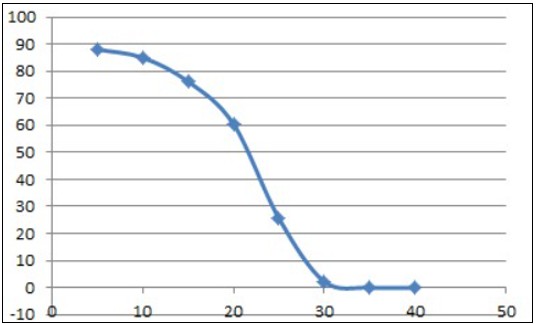En el ámbito de la ciencia de los alimentos y el control de calidad., la determinación del contenido de grasa sólida (SFC) Es un parámetro crítico que influye en la aplicación y el rendimiento de grasas y aceites.. Métodos tradicionales de medición de SFC, como el método dilatométrico, han estado plagados de ineficiencias e imprecisiones. Sin embargo, la llegada de la resonancia magnética nuclear de bajo campo (RMN-LF) ha revolucionado la forma en que se mide SFC, ofreciendo una alternativa rápida y precisa.

El concepto de SFC es sencillo pero significativo; se refiere a la proporción de grasa que es sólida a una temperatura dada. Este atributo es fundamental para definir la usabilidad y la versatilidad de las grasas en varios productos alimenticios.. La relación entre SFC y la temperatura dicta la gama de aplicaciones del producto., haciéndolo una métrica de control de calidad esencial.
LF-NMR se ha convertido en el método preferido para la medición de SFC debido a sus ventajas inherentes sobre las técnicas tradicionales. El proceso se basa en las distintas características de los protones de hidrógeno en grasas sólidas y líquidas dentro de un campo magnético. Los protones de grasa sólida exhiben decadencia de señal rápida en la decadencia de inducción libre de RMN (DEFENSOR) señal, a menudo alcanzando cero dentro de los microsegundos, Mientras que los protones de grasa líquida decaen más lentamente, con pérdida mínima a la misma escala de tiempo.

El método directo de medición LF-NMR implica capturar la señal FID de la muestra, distinguir entre señales sólidas y líquidas, y cuantificar directamente el SFC. La clara diferencia en las tasas de descomposición de la señal entre los componentes sólidos y líquidos permite la medición precisa seleccionando puntos apropiados en la señal FID.
La implementación de LF-NMR en la medición de SFC no solo se limita a su precisión y velocidad, sino que también se extiende a su naturaleza fácil de usar. El proceso no requiere operadores altamente calificados, Reducir el margen de error humano y mejorar la eficiencia general.
Para aquellos que buscan incorporar la tecnología LF-NMR en sus procesos de control de calidad., Se recomiendan instrumentos como el analizador de contenido de grasa sólida de resonancia magnética PQ001-SFC. Estos dispositivos están diseñados para proporcionar mediciones de SFC confiables, Garantizar la consistencia del producto y el cumplimiento de los estándares de la industria.

La integración de LF-NMR en la medición del contenido de grasa sólida representa un salto significativo en la ciencia de los alimentos y la garantía de calidad. Ofreciendo un rápido, preciso, y método eficiente para determinar SFC, La tecnología LF-NMR permite a los fabricantes mantener estándares de alta calidad y cumplir con las expectativas del consumidor. A medida que la industria alimentaria continúa evolucionando, La adopción de LF-NMR para la medición de SFC se convertirá en cada vez más frecuente, Mantener la unidad de la excelencia en el desarrollo de productos y el control de calidad.
Palabras clave: Contenido de grasa sólida, SFC, Resonancia magnética nuclear de bajo campo, RMN-LF, ciencia de los alimentos, control de calidad, método dilatométrico, Señal FID, PQ001-SFC, consistencia del producto, Normas de la industria.
 mohoso
mohoso